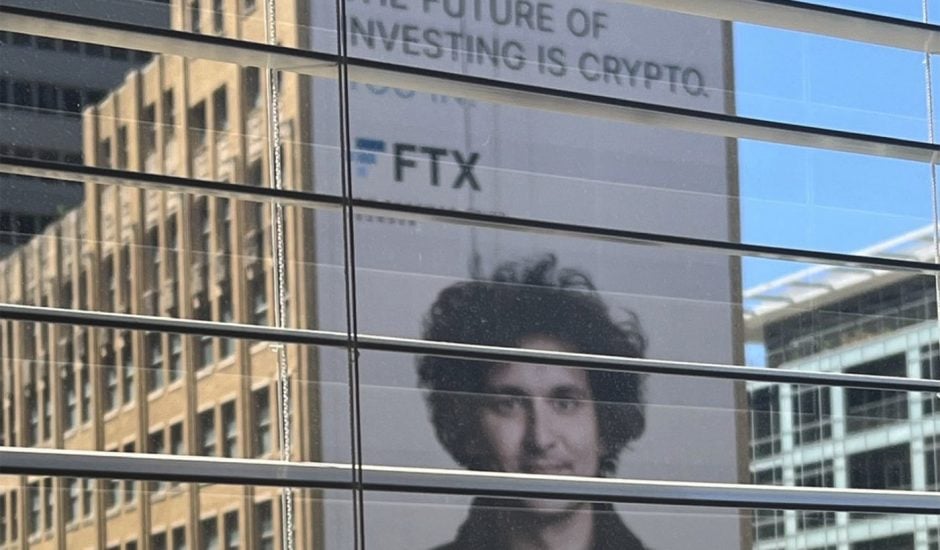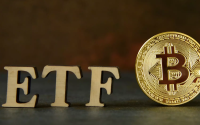FTX scandal: where are we?
The trial of Sam Bankman-Fried will take place on January 3, 2023. The case has taken on a large scale, both media, legal, but also in the world of cryptocurrencies. This is what to remember on the eve of the trial of the founder of FTX.

In November 2022, the world’s second largest cryptocurrency exchange platform, FTX, filed for bankruptcy. Since then, its founder, Sam Bankman-Fried (SBF), has been arrested in the Bahamas and released on bail until his trial on January 3, 2023. However, the FTX scandal is far from over. Here’s everything we know so far.
The Bahamas wants to keep FTX’s assets The Securities Commission of the Bahamas (SCB) announced on Thursday, December 29 that it plans to temporarily retain FTX’s assets, which are estimated to be worth $3.5 billion. The local authorities believe it is their duty to hold onto the assets in order to compensate creditors of the world’s second largest cryptocurrency exchange platform. There are several types of assets involved: real estate and digital assets. The latter were transferred to digital wallets under the control of the commission in November, shortly after Alameda Research and dozens of affiliated companies filed for bankruptcy in the US. Once the transfer was completed, FTX founders Sam Bankman-Fried and Gary Wang lost control of the assets.
Christina Rolle, the CEO of the Securities Commission of the Bahamas, made a sworn statement filed with the Supreme Court of the Bahamas explaining that “all transferred assets were, and will remain until further order, under the exclusive control of the commission.” However, FTX’s lawyers are opposed to this action, stating that they “do not trust the Bahamas government” and that the local authorities could “siphon off the assets of the bankrupt company.” According to Deborah Kovsky-Apap, a bankruptcy lawyer not directly involved in the case, “the extent of the seizure of assets sends conflicting signals to FTX’s customers.”
The lawyer believes that the Bahamas government’s action could exacerbate the situation between the company’s bankruptcy proceedings in the US and the liquidation in the Bahamas. Although it seems very complicated to identify the origin of the assets, the fact that a government entity is seizing and claiming ownership of them could create additional tension in this case. SBF is accused of committing widespread fraud and just a few weeks ago, FTX was valued at almost $32 billion.
How did SBF invest his clients’ money?
It is believed that SBF diverted funds from FTX to his own hedge fund, Alameda Research, which then used the money for risky trades and loans. With FTX Ventures, SBF also invested in cryptocurrency mining operations in China and, according to the US Department of Justice (DOJ), these operations were “run by individuals with known ties to organized crime.” The DOJ also alleges that SBF used “fictitious trading accounts”
According to several statements, Sam Bankman-Fried and Gary Wang reportedly borrowed over $546 million from Alameda Research to purchase an 8% stake in Robinhood Markets. This stake is not insignificant, as it is currently at the center of a ownership struggle taking place in Antigua, New Jersey, and Delaware. FTX and lender BlockFi are attempting to establish their rights to the shares.
BlockFi is suing Emergent Fidelity Technologies, the company holding the Robinhood shares, for control of these securities. The company claims that they secure a loan made to Alameda. FTX’s lawyers have stated that the former CEO of Alameda, Caroline Ellison, had promised the shares to BlockFi just before the FTX bankruptcy. In reality, Alameda’s loan from FTX is at the heart of the fraud case against Bankman-Fried being held in the federal court of Manhattan.
Alameda Research bought 56 million shares from Robinhood Markets. This will be one of many battles Bankman-Fried will face in front of the judges. Ellison, who pleaded guilty, as part of a deal with federal prosecutors, signed the loan to Bankman-Fried and Wang, according to court documents. For his part, Wang turned against Bankman-Fried and also reached an agreement with the prosecutors.
Crypto lender BlockFi, which like FTX has filed for bankruptcy, claimed in a court document that the rights to Robinhood Markets shares were owed to it due to a settlement reached with Bankman-Fried in early November.
Sam Bankman-Fried could plead not guilty
According to people familiar with the matter, Sam Bankman-Fried could plead not guilty to the fraud charges. In early December, the U.S. Attorney’s Office for the Southern District of New York charged SBF with engaging in “criminal behavior that contributed to the collapse of the crypto-asset exchange,” alleging he oversaw one of the largest financial frauds in American history. According to the Wall Street Journal, on January 3, 2023, Sam Bankman-Fried is expected to appear in person in New York to plead his case. Prior to his arrest, SBF blamed the loss of client funds on sloppy bookkeeping and a bank account problem that allowed Alameda Research, an affiliated trading firm, to cover large losses with cash. intended for FTX. His plea of not guilty was therefore widely expected.
If so, Sam Bankman-Fried would find himself at odds with his associates, Caroline Ellison, the former chief executive of Alameda Research, and Gary Wang, the former CTO of FTX, who both pleaded guilty to criminal offenses similar to those with which SBF is charged. The two former Bankman-Fried lieutenants are actively cooperating with federal investigators
Prosecutors allege that from 2019 to November 2022, Sam Bankman-Fried conspired to defraud FTX customers. According to the U.S. Attorney’s Office indictment, he “provided false and misleading information to lenders about Alameda’s financial condition.” He is also accused of defrauding the Federal Election Commission beginning in 2020 by conspiring with others to make illegal contributions to political candidates and committees.
SBF and its associates have contributed more than $70 million to election campaigns in recent years. He personally donated $40 million ahead of the 2022 midterm elections. On Friday, Dec. 30, the former FTX boss returned to Twitter for the first time since Dec. 12 to set up his defense. .
FTX was the victim of a cyberattack
Alongside this case, already considered by observers to be “the biggest fall in the world of cryptocurrencies” and compared with the 2001 bankruptcy of the electricity broker Enron, or that in 2008 of Lehman Brothers, the prosecutors are investigating a possible cyberattack. Indeed, FTX would have been the victim of a cyberattack just hours after filing for bankruptcy. The Department of Justice has launched a criminal investigation into the stolen assets. A separate investigation of the fraud case in which the FTX co-founder is involved.
At this time, it is unknown whether this flaw was exploited by someone inside the company, as Bankman-Fried suggested in interviews prior to his arrest, or the work of an opportunistic hacker intent on exploiting the vulnerabilities of a struggling business. The amount siphoned off by the hacker in question would amount to approximately 372 million dollars. Authorities managed to freeze funds on some platforms because they cooperated with law enforcement, but this was not always the case, especially with offshore exchanges.
The cybercriminal is liable to a maximum sentence of 10 years in prison. Even if the amount stolen is significantly less than the billions of dollars Bankman-Fried is accused of embezzling while at the helm of FTX. The investigation is being led by the Justice Department’s National Cryptocurrency Enforcement Team, a network of prosecutors specializing in digital asset investigations. The team is working with Manhattan federal prosecutors leading the extensive criminal investigation that led to Bankman-Fried’s arrest.
On November 20, Chainalysis, a cybersecurity company, tweeted that the stolen funds were “in motion” and had been transferred from Ether to Bictoin. Experts are warning exchanges to remain vigilant in case the hacker attempts to cash out the funds. According to ZachXBT, a Twitter user who tracks crypto hacks, “some of the funds were also deposited into a mixer, which mixes different types of cryptocurrencies in order to disguise their origins.”


